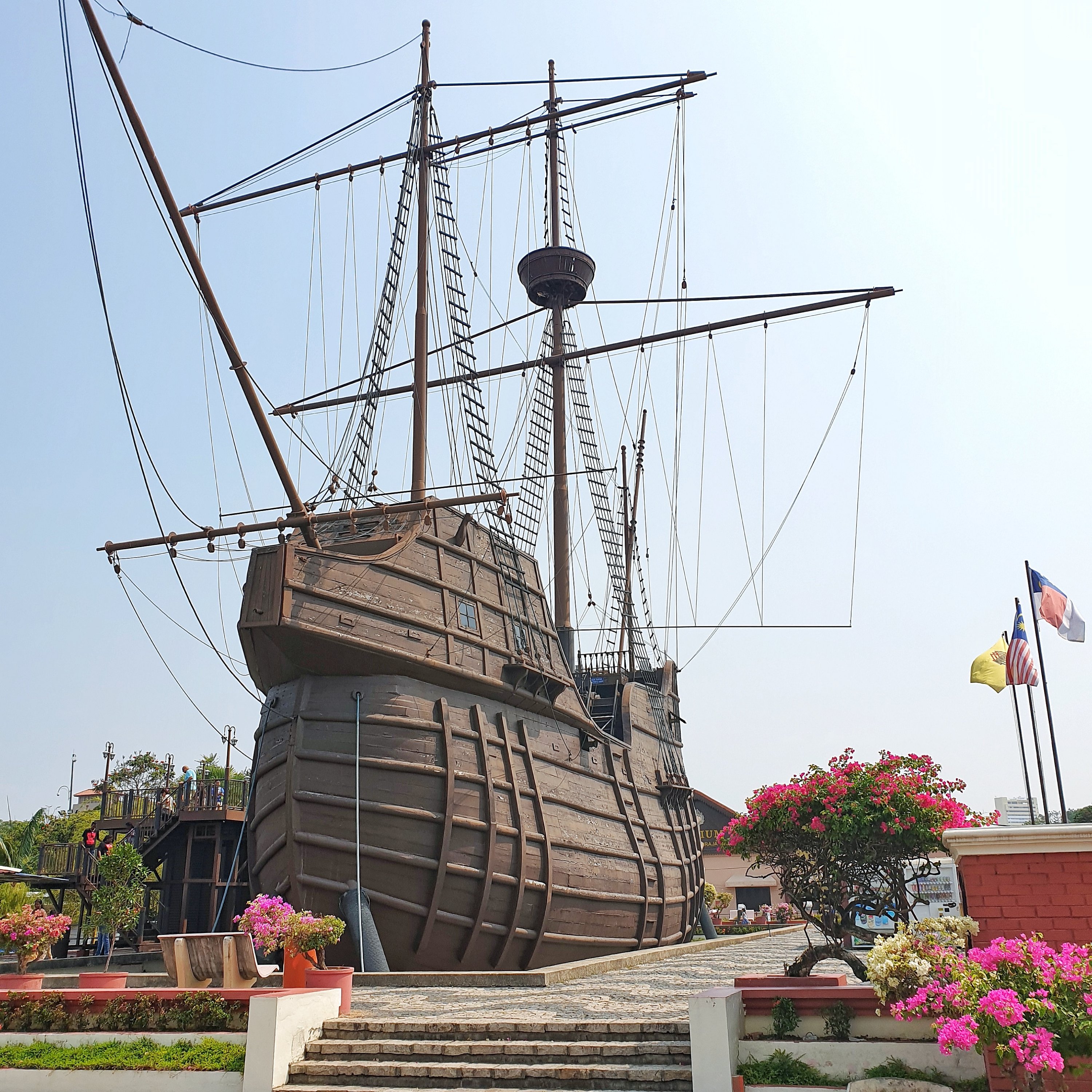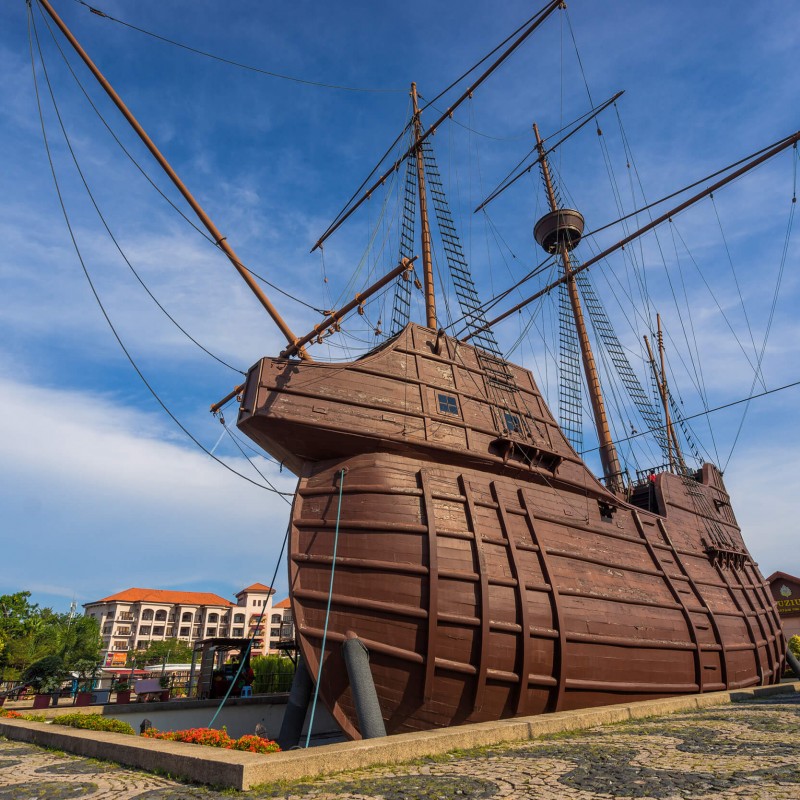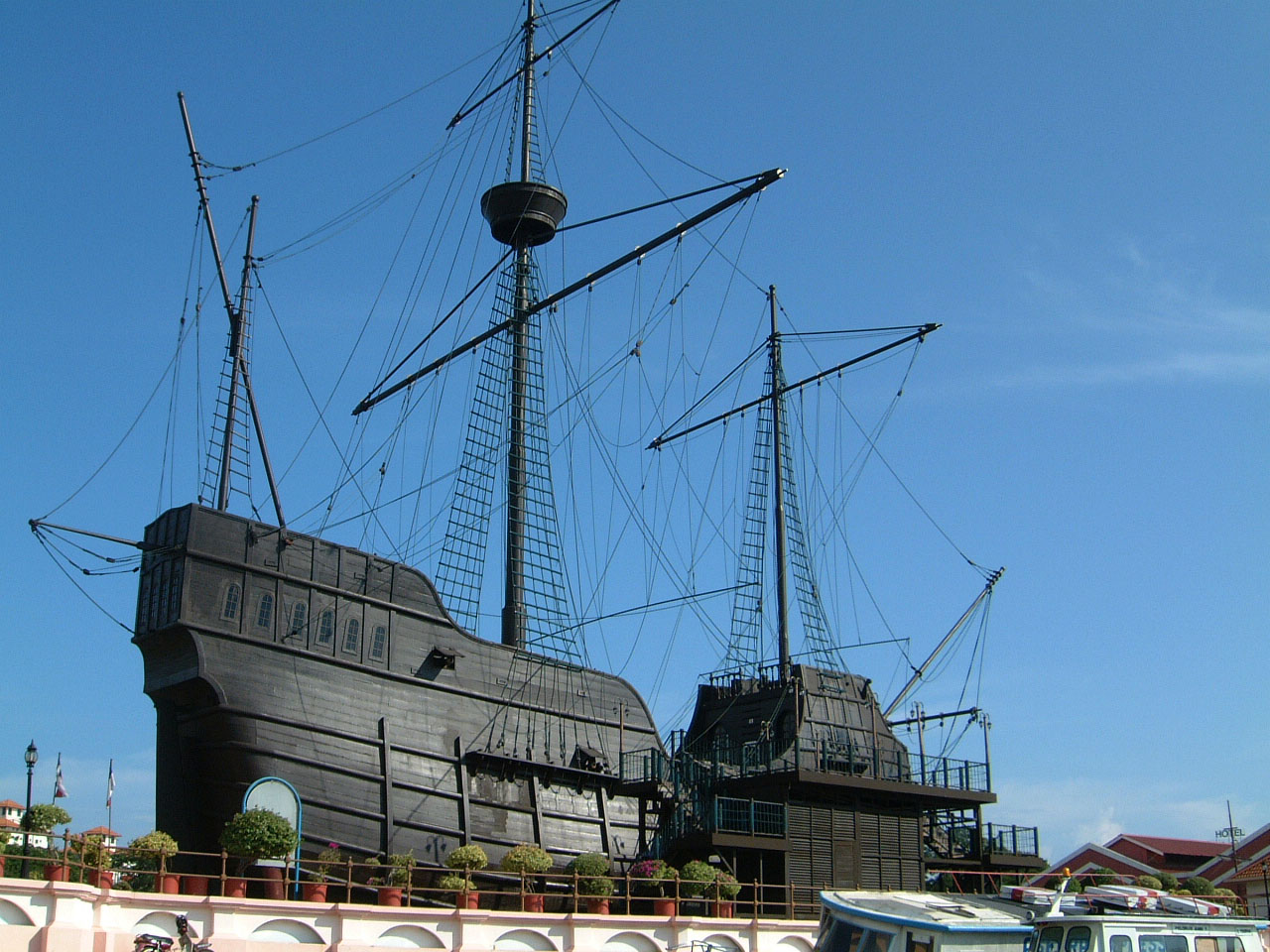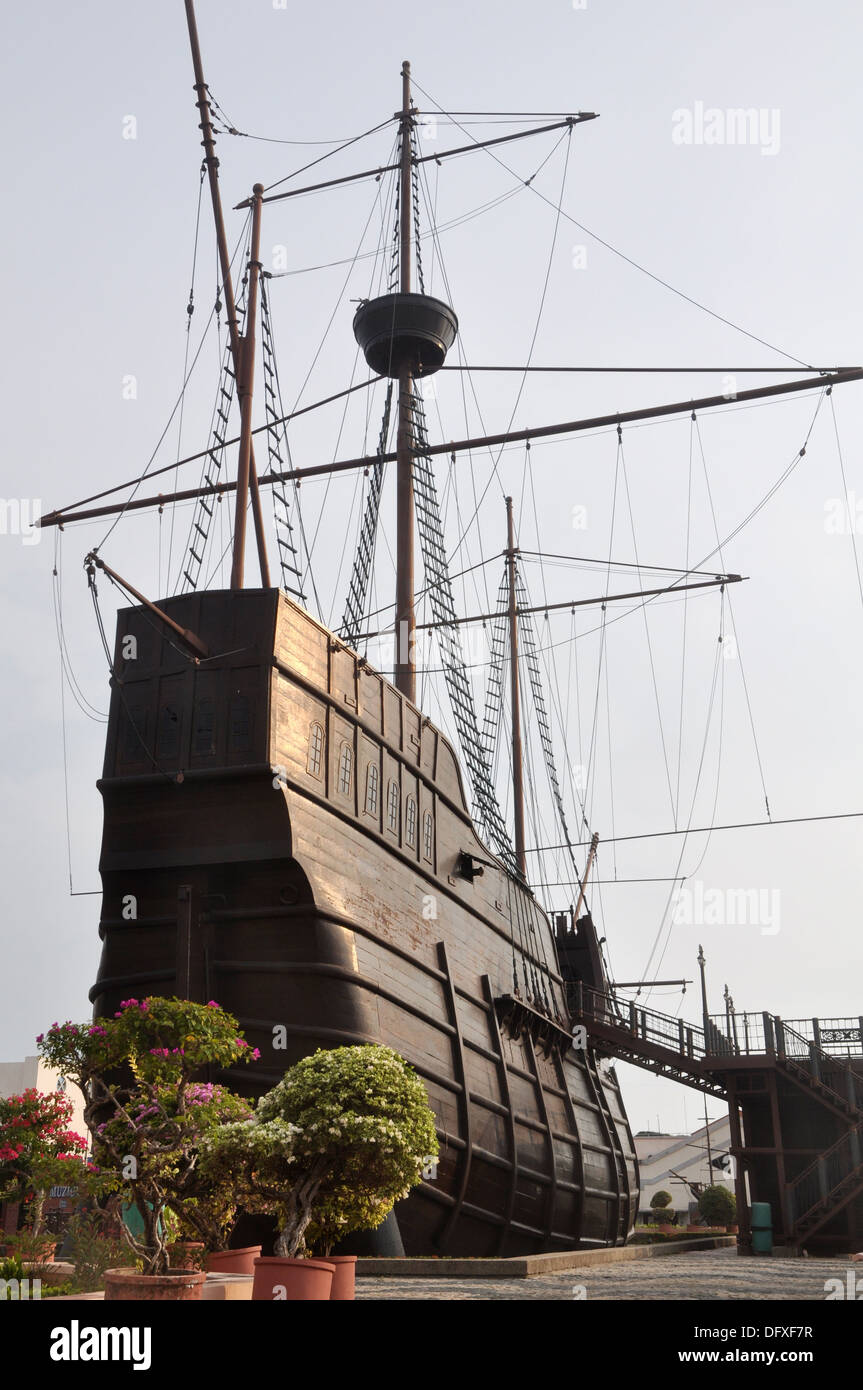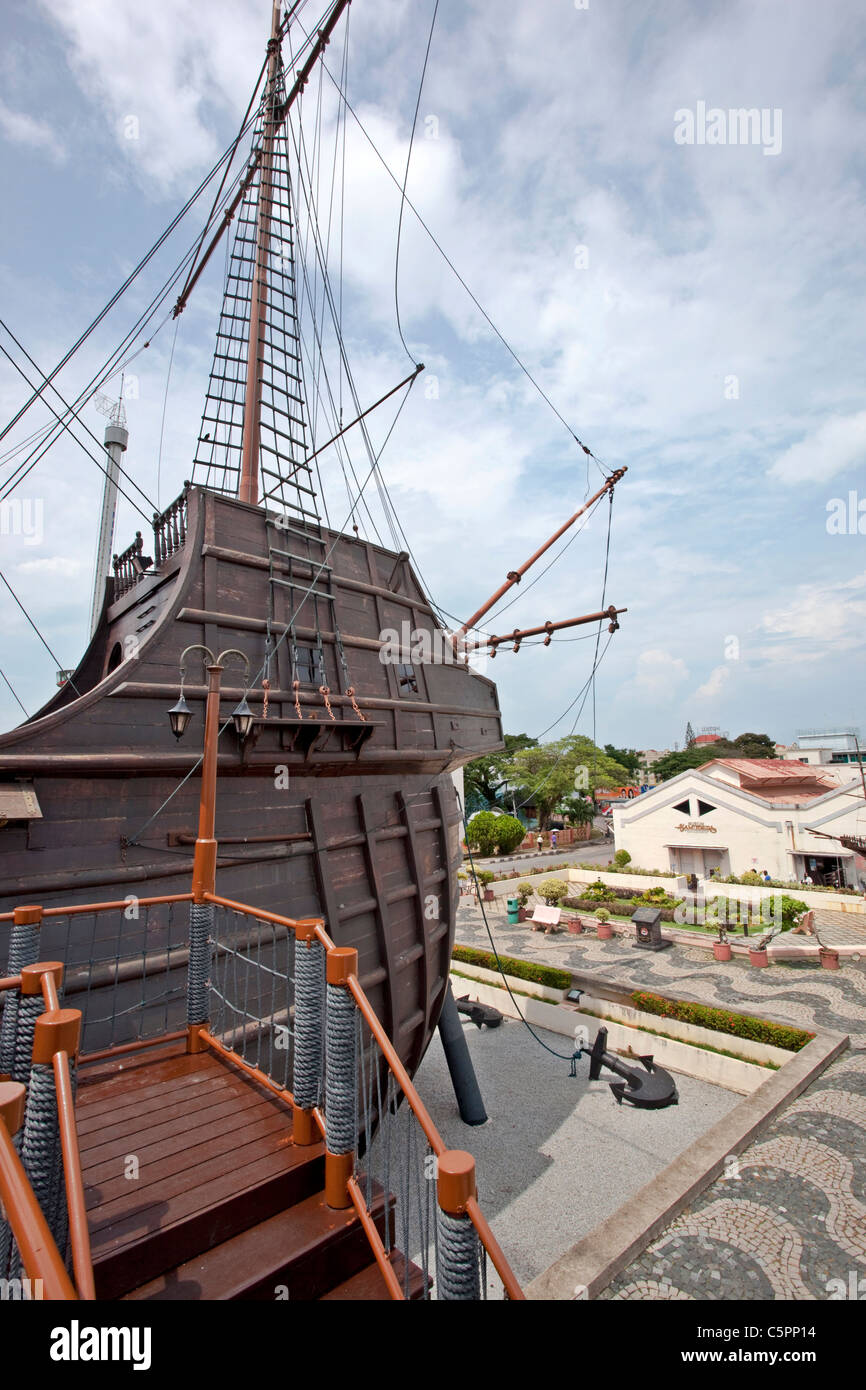Flor De La Mar Melaka

In addition the treasure disappeared in the violent.
Flor de la mar melaka. Hotels near flora de la mar maritime museum. The flor de la mar left malacca in late 1511 and sailed north east along the sumatran state of pasé in the strait of malacca. The ship broke in two and many were lost at sea. During the night a storm hit and the ship ran into some rocks which cracked the ships body.
Jerome s 365 project photo for 26th august 2020 flor de la mar a replica of the sunken 16th century portuguese cargo ship flor de la mar. Flor do mar or flor de la mar flower of the sea spelled frol de la mar in all portuguese chronicles of the 16th century was a portuguese nau of 400 tons which over nine years participated in decisive events in the indian ocean until her sinking in november 1511. The flor de la mar was shipwrecked on the reefs near the straits just northeast of sumatra. Muzium samudera the flora de la ma jalan quayside 75000 malacca malaysia.
Nobleman afonso de albuquerque was returning from the conquest of malacca bringing with him a large treasure trove for the. Malacca river malaysia by jerome. 0 11 mi casa del rio melaka 0 16 mi knocknock home 0 11 mi quayside hotel 0 10 mi the travelers hostel guest house 0 16 mi nomaps. It was on the way back to portugal and was unfortunately caught in a storm.
The flor de la mar or flor do mar meaning flower of the sea was a portuguese carrack of 400 tons that sailed the seas during the early 1500s this ship was carrying a great amount of treasure when it sank somewhere off the coast of sumatra possibly at the northern end of the strait of malacca during its voyage back to portugal. This ship was carrying a significant amount of treasure when it sank near sumatra possibly in the strait of malacca. Flor de la mar. The flor de la mar was a portuguese trading ship of 400 tons that sailed the seas during the early 1500s.
In melaka on the quayside near the mouth of the melaka river stands a replica of a portuguese galleon or carrack called the flor de la mar which sailed in these waters in the early 1500s. With such a heavy cargo and no way of saving themselves.



